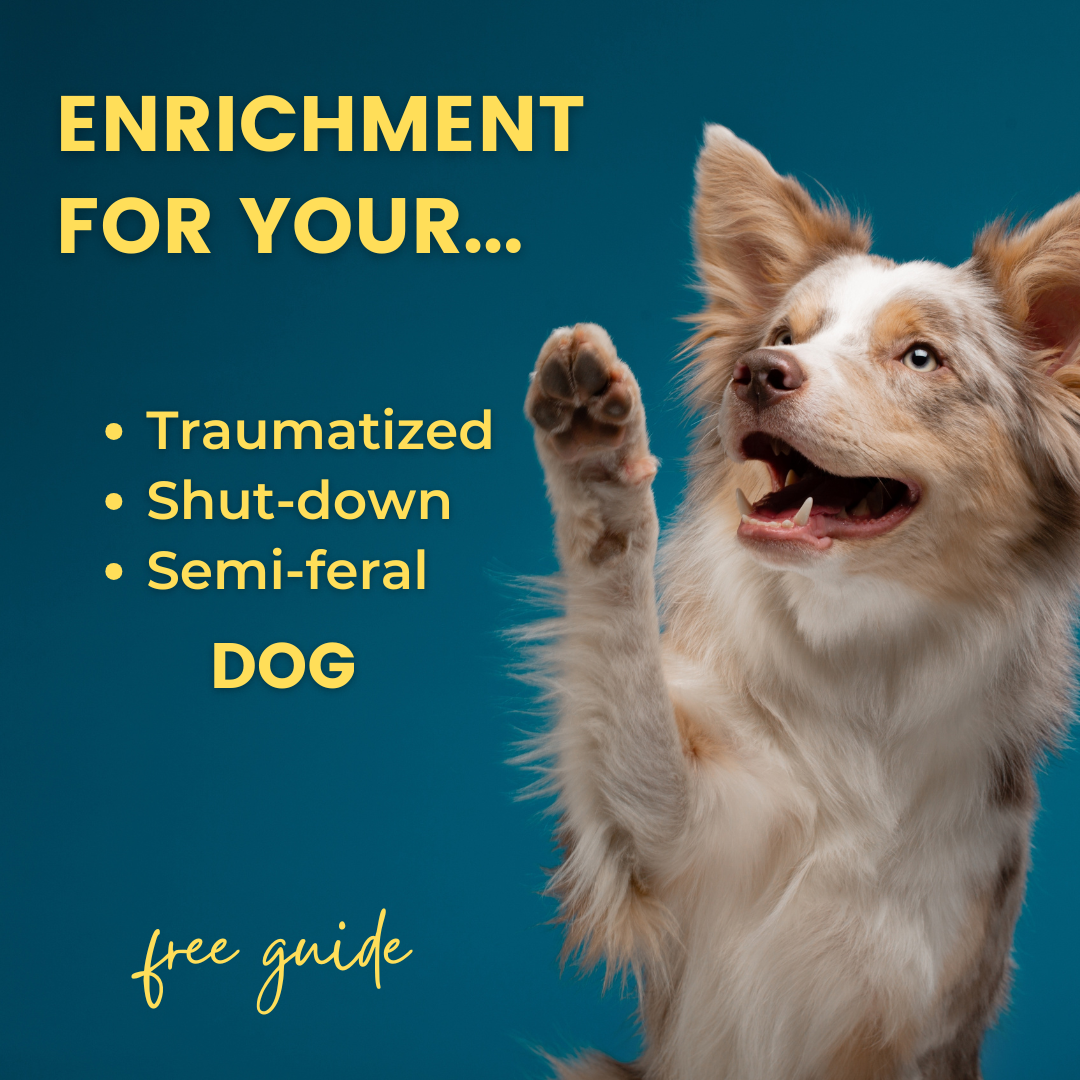
If you have a newly adopted dog, or if your fearful dog is just starting to go on walks, you’re in a unique position. You might be able to prevent reactive behavior (lunging, barking, etc.) from becoming a problem.
In this video I covered some of training we did with our fearful pup Pancake, on his first walks. Pancake is afraid of a lot of things, and some of the behaviors he tries most often when afraid include lunging and barking. I wanted to prevent this “reactive” behavior from becoming a habit on walks.
Before you can start with this training, your dog has be happy to be harnessed and leashed, and be comfortable going out the door on walks.
Here are the highlights of this short video:
Choose Walk Locations Carefully
When you bring home a newly adopted dog, you might be tempted to take them on a stroll through the local farmer’s market, of bring them along to a beer garden or outdoor cafe. But these are not the first locations you should take a dog whose behavior on walks you are still learning about and hoping to shape. Your first walks should be:
- In a quiet location with few people, dogs, and little traffic;
- In open space if possible where you can see any people, dogs, etc. from quite far away (think football field distance);
- Short! While a 15 minute or even 5 minute walk might sound like not enough exercise for your dog, exercise isn’t the goal here. You are trying to shape your dog’s behavior on walks. Assume they might be afraid of anything and everything they see out in the world, and respond negatively. Quiet, short walks give you the best chance of successful training to prevent future “reactive” behavior.
Notice What Your Dog Notices
Pay careful attention to your dog on their early walks. There is important information there if you know what to look for, and lots of opportunities to potentially prevent future “reactive” behavior.
Notice what your dog notices. In other words, what does your dog look at while you’re out on the walk? What do they stare at for an extra second or two? Is there anything they back away from, or try to move toward? These are things that could become “triggers” of reactive behavior (although anything could) and I always take special care to reinforce desirable behaviors around those potential triggers. While your dog is an individual and will have their own set of potential triggers for “reactive” behavior, some common ones for dogs include:
- Other dogs;
- People walking or jogging by;
- Cars or trucks;
- Bikes or skateboards;
- Small animals (cats, squirrels, rabbits etc.)
Reinforce a Variety of “Quiet Noticing” Behaviors
Your dog is always doing something! Most of what our dogs do, we never intentionally reinforce, or even notice. To attempt to prevent future reactive behavior on walks, you’ll want to proactively reinforce any desirable behaviors your dog is already doing around potential “triggers.” Examples of “quiet noticing” behaviors that you could reinforce include:
- Orienting/looking at something;
- Looking at you after looking at or appearing to hear something;
- Walking by a potential “trigger”;
- Sniffing the ground;
- Anything else that’s ok with you!
As with most work with fearful, reactive, or aggressive dogs, you’ll likely make faster progress, and feel less stressed and overwhelmed, if you have someone helping you. Join our monthly training membership and have trainers “on call” to answer your questions, or sign up for private training, and get the support you need.
If you try these tips and have success, or trouble, we want to hear from you. Join our Facebook group and post your questions or comments there, or reach out to us by email at [email protected]!
Looking for more help? Check out our online, self-paced course for reactive dogs!
Categories


Have a dog who is too anxious to have fun? Grab this free guide & video lesson all about how to teach your extremely fearful dog their 1st enrichment game.


Community
We offer a free private Facebook support group for owners of fearful dogs to connect and share their stories. Join us there.


